By Victoria Fontes
Listen to the audio version here:
On a cool, sunny Saturday morning in February, cars are starting to fill the parking lot at Vaughan Mills. The mall just opened and only a smattering of customers are here. In Sephora, some of the testers are conspicuously missing from the Drunk Elephant display. The display itself is splashed with brown stains, the result of a new phenomenon: the “Sephora Kids.” It looks like art class has a new location.
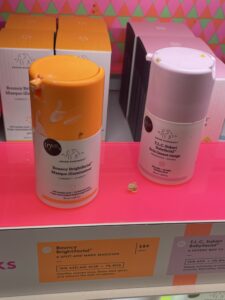
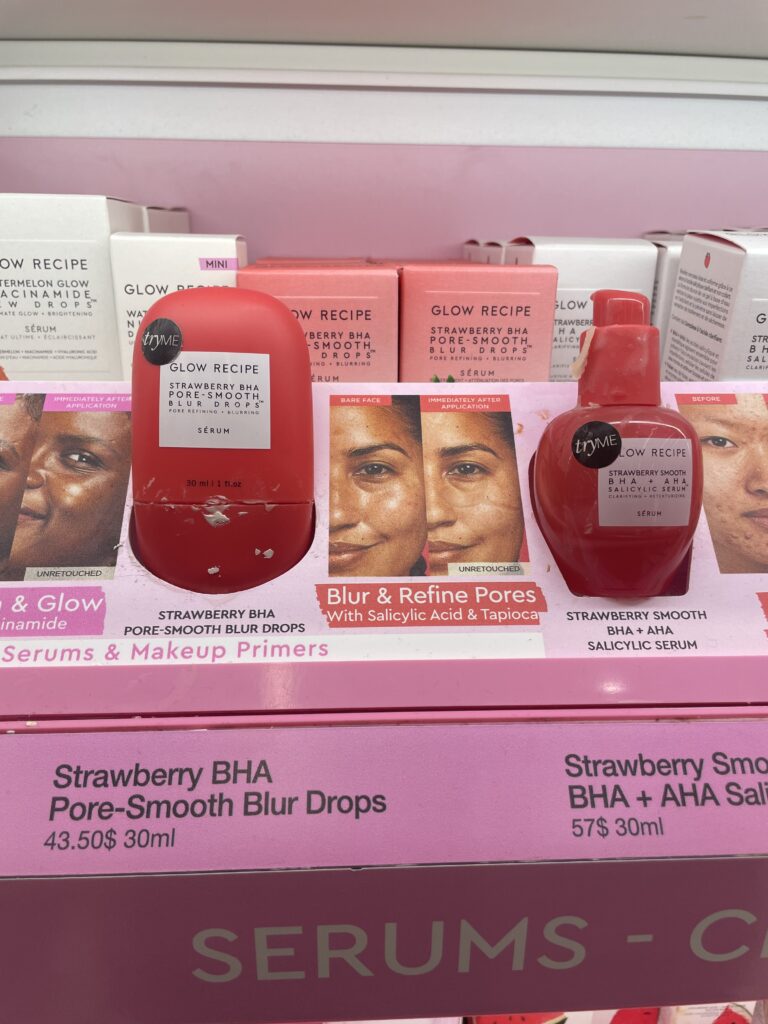
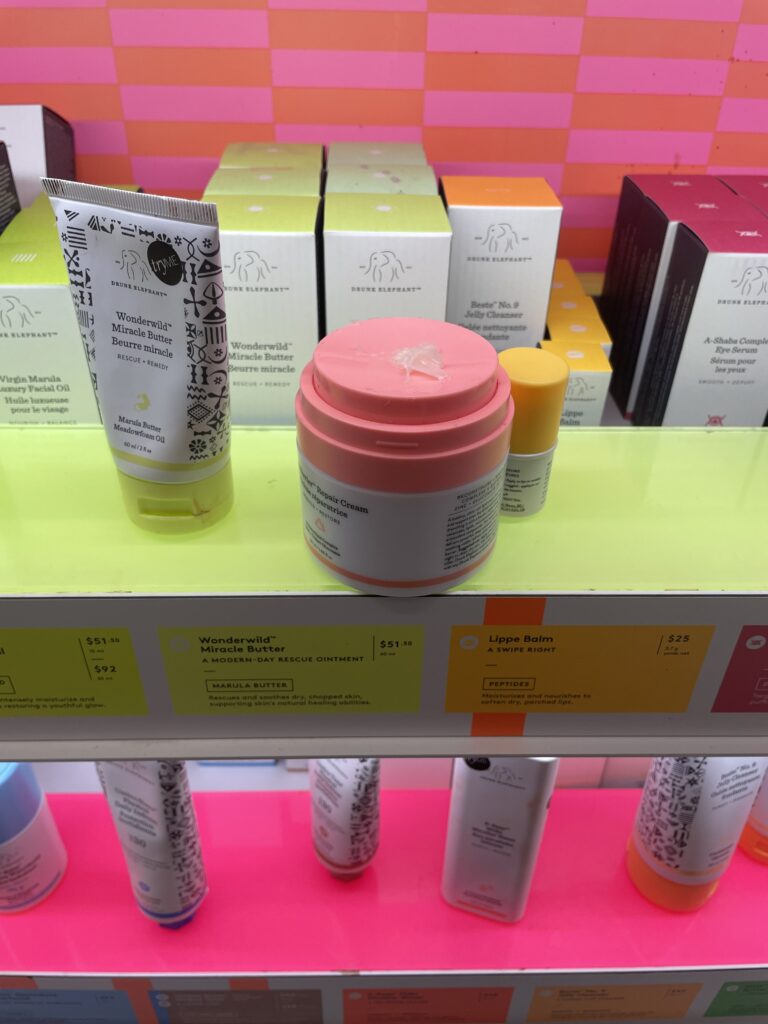
Inspired by the influencers they see online flaunting expensive, multi-step skincare routines, tweens are flocking to stores like Sephora to buy pricey products. Along the way, they’re trashing store displays, stealing testers and generally wreaking havoc on the stores. Videos addressing this phenomenon have garnered more than 45 million views across TikTok, Facebook and Youtube in recent months. It’s been covered by Allure, Teen Vogue, and Glamour, but the Sephora Kids aren’t just an online phenomenon – they’re all over the GTA. Sephora employees from seven locations across Toronto confirm their stores have been flooded by unusually young customers in recent months. While these tweens may think they’re improving their skin, experts say common ingredients found in many of the products they’re buying, like AHA’s, BHA’s, essential oils, sulphates and parabens, may be doing more harm than good.
The Sephora at Yonge Eglinton Centre is less than four blocks from Northern Secondary School, just close enough for students to walk over after class. It’s a popular spot for students, which may be one reason the store has “banned” testers for Drunk Elephant, the preferred brand of the Sephora Kids. “If you go near them, employees will follow you,” says 16-year-old Evan Elberg.
Every day, Elberg applies a rainbow of products on his face. His skincare collection is worth nearly $300. His routine includes a Squalane Cleanser ($26), Hyaluronic Acid 2% + B5 Hydrating Serum ($12) by The Ordinary, the Cloudberry Bright Essence Toner ($52) and the Watermelon Glow Niacinamide Dew Drops Serum ($48) by Glow Recipe. The Lip Sleeping Mask Intense Hydration with Vitamin C ($33) and the Water Bank Blue Hyaluronic Cream ($54) by Laneige. He also applies Glow Recipe’s Guava Vitamin C Bright-Eye Gel Cream ($52) under his eyes. “I have pretty prominent eye bags,” he says.
These products may be useful in some cases, but tweens are often misinformed by influencers, according to Dr. Renée A. Beach, who is a board-certified dermatologist, an assistant professor at the University of Toronto and the owner of DermAtelier on Avenue. Beach, whose clinic offers both medical and cosmetic skincare services, says that the products Elberg uses may work but only to a certain degree – as humans age, their faces change. An eye cream could help for a few hours, but the solution he’s chasing is actually a surgical procedure. “It still doesn’t correct the structural change underneath. The fact that our fat pads deflate and descend, that’s what reveals or makes the under eye bags or the ocular fat pad more prominent,” says Beach.
Elberg’s cousin Emma Besner has a skincare routine that’s worth almost the same as his. She’s 11. Besner’s parents offer cash rewards for chores and good behaviour – one hour of reading is worth $20 – which she often uses to add to her skincare collection. Besner’s mom checks her cart in the Sephora app, reads the product descriptions and does additional research before approving her daughter’s purchases.
Every night, Besner starts off with the Sephora Watermelon Cleansing Wipes ($8). She then goes in with the Tower 28 S.O.S. Daily Rescue Facial Spray ($38) and the Glow Recipe Watermelon Glow Toner ($48). Then it’s The Ordinary Niacinamide Serum ($7) and Drunk Elephant’s B-Hydra Intensive Hydration Serum ($66). She finishes up with the Drunk Elephant Lala Retro Moisturizer ($84) or the Bubble Slam Dunk Moisturizer ($20), leaving her feeling refreshed and ready for bed.
Many of these products contain dozens of ingredients, which can be difficult to navigate not only for tweens and teens, but their parents, too. Maria Velve, a Toronto-based makeup artist who specializes in environmentally-friendly products, has a son, Markus, who suffered from eczema when he was a few months old to three-years-old. At night, Velve sometimes slept alongside her son to hold his arms down and keep him from scratching his face. In searching for something to soothe his pain, she felt she had to question every ingredient list. And sometimes she would still wake up to blood stains on her son’s pyjamas.
Velve says consumers often run to stores to find a quick fix when they encounter skin issues, but she recommends narrowing down what’s actually causing the issue first. It could be stress, or ingredients used in another product that the skin is having a negative reaction to. She compares this to an elimination diet, something she did to help Markus’ eczema. Some of the solutions that ended up helping with his eczema weren’t products at all. She found limiting the number of baths he took and removing synthetic fragrances from their laundry soap to be effective. She says people tend to over-cleanse their skin and use too many products when a simple routine would work. Sometimes all that’s needed is a little water. “They don’t always necessarily need soap, unless they are, I don’t know, rolling around in the dirt,” says Velve. She emphasizes that a cleanser’s purpose is to remove dirt and excess oil. “It’s not supposed to strip you to the point where the protective oils your skin produces as an organ to moisturize, protect and to create your skin biome.”
On Ossington Ave., the walls of Proprlifestyle are stacked with face masks, toners and moisturizers from Korean skincare brands. The soft-spoken owner, Althea Johnson, patiently walks customers through the benefits of each product, doling out samples as she goes.
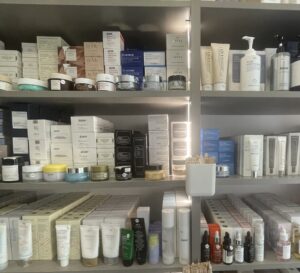
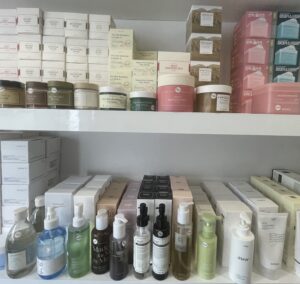
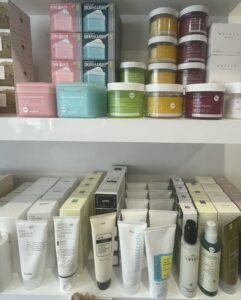
When young customers come in for products, Johnson recommends brands that can be used on them as well as babies. “They’re very gentle and they don’t have fragrances,” says Johnson.
Dr. Annie Liu is a board-certified dermatologist and the co-founder of DermCafé, a virtual dermatology clinic. Liu explains the backbone protein of the skin that makes faces look firm and smooth is collagen. There’s also elastin, which she calls the cousin molecule of collagen. As people age, these temporary properties result in looser skin with a little more texture. Many products are designed to address this process, which has yet to occur in teenagers. “Sometimes in today’s culture there is a focus and a fixation on maintaining youth which is understandable, but I think we have to do that to a healthy extent and a healthy way,” Liu explains.
Liu says all the Sephora kids really need is a little SPF. “Their skin is the best it will ever be in their whole life, so they should more so, enjoy it and just simply focus on protecting it, using sunscreen, and keeping it clean and healthy.”
Tracing back to Vaughan Mills on another Saturday afternoon a month later, the Sephora Kids are back at it again. Three young girls, wearing bright, colourful clothes are surrounding the display shelves of Drunk Elephant, Glow Recipe and Laneige, discussing which prices, their wish lists and the products they already love. One says that a certain Laneige product is making their skin sting, which shows that it’s working. Is this actually true? It could be, but she could also be mistaken, or repeating something she heard on TikTok.
These tweens and teens aren’t likely to start listening to the experts, who recommend water, soap and SPF, any time soon. But maybe in a few years, the Sephora Kids will realize that they may have put too much paint on the canvas.

